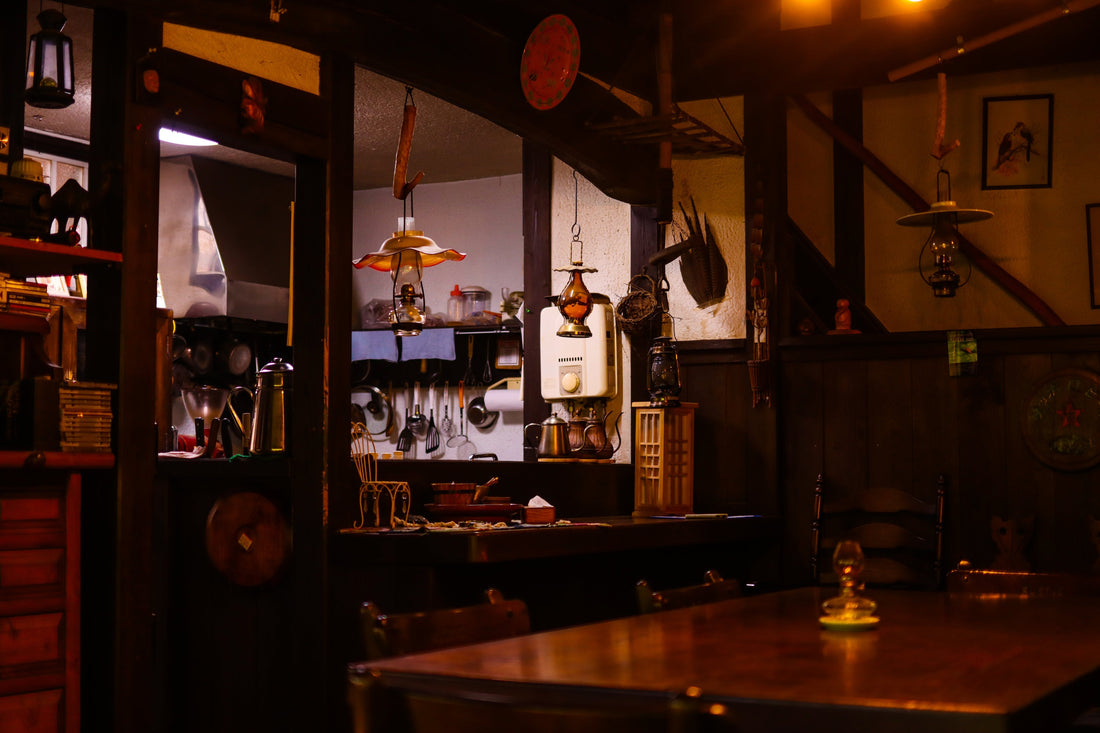Reading material
The history of coffee in Japan

Coffee culture in Japan is now deeply rooted in our lives. However, the road to getting here was not always smooth. It took a long time for coffee to be accepted as a foreign culture in Japan, and it has a history of developing in its own unique way.
This blog will carefully unravel the history of coffee in Japan, from era to era, and will clearly show the background to its transformation from an imported product to a soothing drink in everyday life.
First contact with coffee in the Edo period and the "foreign body" feeling

Coffee first appeared in Japan in the late 18th century during the Edo period. It is believed to have been first brought by the Dutch through Dejima in Nagasaki. At the time, coffee was an unknown drink to the Japanese, and its bitter taste and aroma were far from familiar.
According to records, although Dutch scholars introduced coffee to Japan, citing its beneficial effects and exotic culture, it was not widely accepted by the general public. Due to differences in taste and the deeply rooted tea culture, coffee was treated as a "rare medicine."
Meiji Period: The spread of coffee along with the opening up of the country
It wasn't until the Meiji period that coffee really began to take root in Japan. Western culture spread to urban areas on the wave of modernization , and coffee began to play an important role in that.
Kahisakan, which opened in Ueno, Tokyo in 1888, is known as Japan's first authentic coffee specialty store. It attracted attention with its modern space and Western-style interior, and became a gathering place for intellectuals and writers.
From this time on, coffee began to establish itself as a drink symbolizing the intellectual class and urban lifestyles . However, its popularity among the rural areas and the general public was still limited, and coffee was still considered a "special drink."
Early Showa Period to Postwar Period: Coffee's Stagnation and Restart
In the early Showa period, cafe culture flourished, especially in urban areas, and coffee became an established part of entertainment and socializing. In particular, in the 1920s and 1930s, coffee at cafes became a symbol of a new lifestyle among young people known as modern boys and girls.
Due to the effects of World War II, coffee bean imports ceased and the tea drinking culture declined significantly. During the chaotic period of the war and after the war, coffee substitutes became popular, and there was a long period when coffee tasted far from the "real thing."
However, with the post-war recovery, coffee culture once again took root in Japanese life . Due to the influence of the occupying forces, American-style coffee was introduced, and new forms such as canned coffee and instant coffee also appeared, making it easy to enjoy coffee at home.
The period of rapid economic growth: the golden age of coffee shop culture

From the 1960s to the 1980s, Japan experienced rapid economic growth and brought about major changes in lifestyles. During this period, coffee shops began to appear all over town, and coffee became a fully established part of everyday life .
Coffee shops are not just a place to drink coffee; they are beloved by people as a space for reading, meetings, or contemplation. Coffee enjoyed with a morning set or Neapolitan pasta is a familiar symbol of leisurely time.
Coffee shops in this era were not just stores, but also supported the rhythm of life and provided a sense of peace of mind . In particular, the flourishing of specialized techniques such as in-house roasting and flannel drip led to an even greater interest in and love for coffee.
Modern Coffee Culture: An Era of Diversity and Individuality

Now, in the 10th century, the trend for a high-quality cup of coffee has accelerated in Japan, along with the global trend of specialty coffee. A trend of paying particular attention to the origin of the beans, roasting, and brewing method has taken root, and there is a demand for a more delicate and rich coffee experience.
Unique roasters and cafes have appeared all over Japan, each serving coffee in their own unique style. Brewing techniques have also diversified, from hand drip to aeropress, making coffee a more profound experience.
In addition, high-quality coffee can now be easily enjoyed at convenience stores and chain cafes, and coffee has grown to become an essential part of all generations and lifestyles.
A summary of modern features is as follows:
- Diversification of cafes (specialty, vegan, etc.)
- Emphasis on bean traceability and sustainability
- Full-scale extraction at home (the spread of mills and drippers)
- Coffee events and workshops were a big success
- Sharing coffee culture through social media
summary
Japan's coffee culture began as a "foreign taste" brought in from outside, and over the years has gradually become integrated into people's lives. Its history is not simply the spread of a drink, but is deeply connected to changes in the lifestyles and values of the Japanese people.
At first, people were surprised by the bitterness, but they were soon captivated by the richness of the flavor, and now more and more people enjoy grinding the beans by hand and taking the time to brew the coffee. These experiences have nurtured Japan's unique coffee culture.
While Japanese coffee will continue to change with the times, it will continue to soothe people's hearts and add color to their daily lives. The fact that a cup of coffee brings quiet happiness will never change.